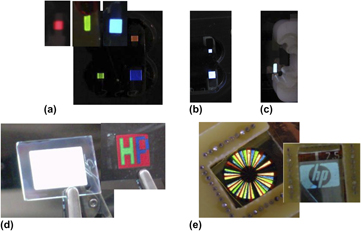Article contents
Development of semi-interpenetrating polymer networks and quantum dots–polymer nanocomposites for low-cost, flexible OLED display application
Published online by Cambridge University Press: 25 January 2012
Abstract

Recently, tremendous progress has been made toward the application of organic light-emitting diodes (OLEDs) in full color flat panel displays and other devices. This article reviews and discusses our recent progress in extended development of emissive semi-interpenetrating polymer networks (E-semi-IPNs) and hybrid quantum dots (QDs)–polymer nanocomposites for use in multicolor and multilayer OLED pixels through low-cost solution processing. Our semi-IPNs with high solvent resistance, containing an inert polymer network and conjugated polymers, served in different layers of OLED devices. These semi-IPNs do not require complicated chemical modification to OLED materials; therefore, many state-of-the-arts conjugated polymers can be utilized to achieve red–green–blue and white OLEDs by tuning formulations. Our research findings on hybrid QD–oligomer nanocomposites lead to the successful design and synthesis of QD–polymer hybrid nanocomposites, which were used to build proof-of-the-concept devices showing good promise in providing excellent color purity and stability from QDs and solution processability from hybrid nanocomposites.
Keywords
- Type
- Invited Feature Paper
- Information
- Copyright
- Copyright © Materials Research Society 2012
References
REFERENCES
- 9
- Cited by




